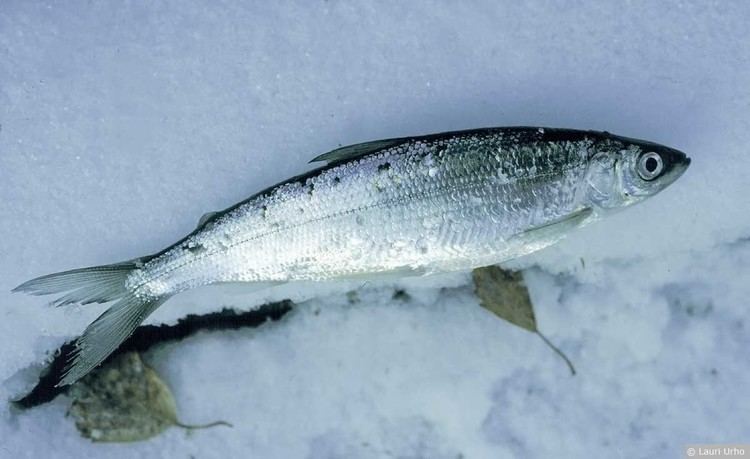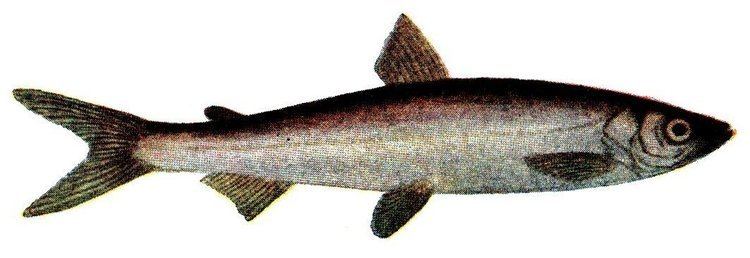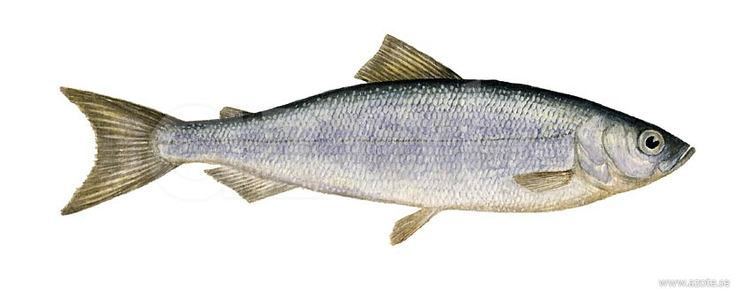Order Salmoniformes Subfamily Coregoninae Rank Species | Phylum Chordata Genus Coregonus Higher classification Coregonus | |
 | ||
Similar Coregonus lavaretus, Coregonus, European smelt, Peled, Burbot | ||
Coregonus albula, known as the vendace or as the European cisco, is a species of freshwater whitefish in the family Salmonidae. It is found in lakes in northern Europe, especially Finland, Sweden, Russia and Estonia, and in some lakes of Norway, the United Kingdom, northern Germany and Poland. It is also found in diluted brackish water in the Gulfs of Finland and Bothnia, both of which are in the Baltic Sea.
Contents

The length of an adult is normally about 20 cm (8 in). The maximum age is about ten years.
The vendace is traditionally the most important target of freshwater fisheries in parts of Fennoscandia and Russia. Vendace roe is considered a delicacy, which has been granted a PDO status in the Swedish Bothnian Bay archipelago (Kalix löjrom).

Description

The vendace is a slim, streamlined fish with an adipose fin - an additional small fin on the back between the dorsal fin and the tail (caudal fin), as is typical of the salmon family. Its lower jaw is longer than the upper one. It is similar in appearance to both the common whitefish (Coregonus lavaretus sensu lato), whose upper jaw is longer than its lower one, and the peled (Coregonus peled), whose jaws are of equal length. The back is bluish green or brown, the flanks are silvery and the belly white. This fish seldom grows more than 30 cm (12 in) long.
Biology
Vendace mainly feed on zooplankton, such as small crustaceans and their larvae, but larger fish also feed on floating insects and fish fry. The fish live in schools made up of large groups of individuals. They lay their eggs on pebbly or sandy ground, some in shallow water and others at depths of down to 20 m (66 ft). The fish mature at a young age and most spawn for the first time in their second year, but a few may breed in their first autumn.
Systematics
The European vendace is very closely related to the Siberian Coregonus sardinella (sardine cisco) and also to C. peled, although phenotypic differences are clear.

Within the vendace, taxonomic subdivisions have been suggested both on geographical grounds and between sympatric ecotypes. FishBase lists the British populations of vendace as a separate species, Coregonus vandesius, but this distinction is not accepted by all scientists.
Coregonus albula generally breeds in the autumn, but in several North European lakes distinct spring-spawning populations of vendace exist, some of which have been described as separate species: in Sweden, as Coregonus trybomi, and in two lakes of northern Germany, as Coregonus fontanae and Coregonus lucinensis. These populations are sympatric with autumn-spawning vendace, and seem to have evolved post-glacially from them independently in each lake.
